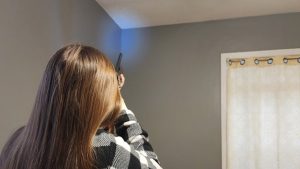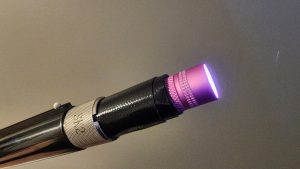A Different Approach to the Iconic Flashlight Drill in the Shotgun Sports
If you’ve been around clays shooting long enough, you’ve heard of the flashlight drill. You insert a small flashlight in the muzzle of the shotgun, mount the shotgun and then move the barrel along the seam of the wall and the ceiling to simulate the line of the target. It’s a solo drill designed to improve your mount muscle memory, target focus and smooth out your swing through repetition.
But what if you added a second person and a second flashlight?
When carried out with a partner, one person moves the flashlight while the shooter tries to keep their aim on the illuminated spot. This version of the drill adds an element of unpredictability, mimicking the unpredictable nature of live targets in the field.

By focusing on maintaining the flashlight beam on the moving target, the shooter also develops an understanding of lead. Lead, in shotgun sports, refers to the distance that must be aimed ahead of a moving target to ensure a hit. Practicing the flashlight drill can help shooters learn and adjust their lead intuitively based on the speed and direction of the target.
The flashlight drill involves both static and dynamic components. Initially, the shooter starts with static targets to get comfortable with the concept of maintaining the flashlight beam on target, and slowly moves to more dynamic, moving targets. This transition from static to dynamic targets aids in learning the rhythm and speed of tracking moving objects.
The functionality of the drill is based on the principle of hand-eye coordination and smooth tracking of targets. The shooter must keep their attention on the moving flashlight beam and align it with their sight picture.
The flashlight drill also involves understanding and adjusting to the speed and direction of moving targets. By practicing with targets moving at different speeds and in various directions, the shooter can develop a greater sense of timing and aim adjustment, which is vital in shotgun sports.

The flashlight drill is instrumental in enhancing shooting accuracy in shotgun sports. It encourages shooters to focus on the mechanics of tracking and leads to the development of smooth and controlled movements. This, in turn, helps reduce jerky actions and abrupt changes in direction that can disrupt the shooter’s aim.
Furthermore, the flashlight drill fosters concentration and patience, qualities that are crucial for any shooter. Maintaining the beam on a moving target requires a high level of focus and control, which can translate to better shooting performance in the field.
Executing the flashlight drill successfully requires practice, patience, and the correct technique. It’s crucial to start slow, with the shooter first practicing on static targets before moving on to dynamic targets. This allows the shooter to get comfortable with the mechanics of tracking and aiming.
When transitioning to moving targets, start with slow, predictable movements. As the shooter becomes more comfortable, the speed and unpredictability of the target’s movement can be increased. The objective should always be smooth tracking, regardless of the target’s speed or direction.
Consistency is key. Just like any other drill, the flashlight drill requires consistent practice for noticeable improvements. Regular practice sessions, preferably under different lighting conditions and with varying target speeds and directions, can greatly enhance the benefits of this drill.
# # #


Comments